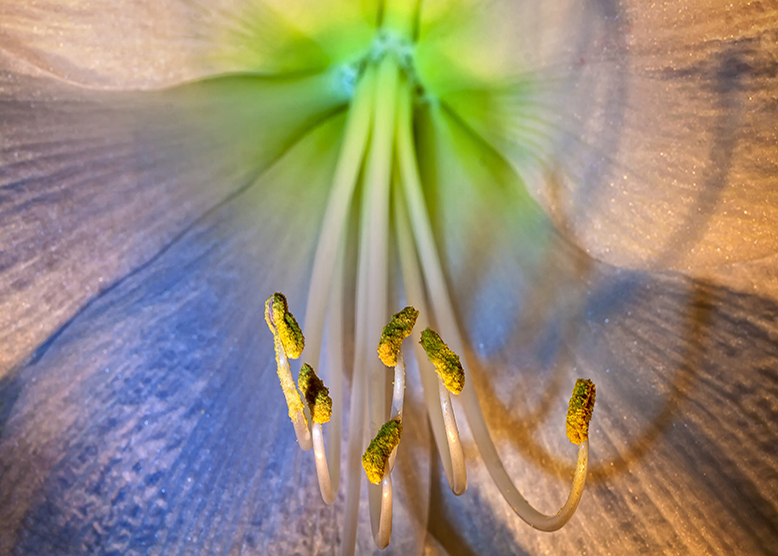
Did You Get a Plant for Christmas? Here’s How to Keep It Blooming
Plants make lovely gifts any time of the year. Around the winter holidays a few Christmas plants in particular take center stage – amaryllis, paper whites, and the Christmas (or “holiday”) cactus. But what if you do not have a green thumb, or have little to no experience with plants? Maybe someone gave you a kit for growing paperwhites. The pictures on the exterior of the box look pretty, but you open the box to see a few brown onion-like things and a list of directions, and then apprehension sets in! And how about those new amaryllises dipped in wax? Let’s take a look at some of the most common Christmas gift plants and learn how to grow them successfully.
Amaryllis (Hippeastrum)
With hundreds of cultivars and a wide variety in color and size, the amaryllis is one of the most popular Christmas plant gifts during the holiday season. Amaryllis bulbs or kits are very affordable so they make great gifts for the office “Secret Santa” and Christmas gift swaps. Amaryllis kits usually contain not only the amaryllis bulb but also a pot, growing medium (soil), and directions. The directions will usually say to place the bulbs in the pot, in the planting medium, with at least the top one-third of the bulb above the soil line. Water lightly and place in a warm, sunny area and wait for the leaves and flower stem to emerge. Water again at this point, but you may not need to water the plant again (or just sparingly). Once the flowers emerge it’s a good idea to move the plant out of direct sunlight. The flowers will last longer this way. You may need to stake the flower stem if it starts to bend over.
Amaryllis bulbs dipped in wax appeared on the market a few years ago, to varying reviews. They are generally advertised as being great for the person who hates gardening. Others report that amaryllises packaged in this way are convenient and easy to grow. They need no water or other care and can be discarded once the flowers and leaves have died back. We have no experience with this product but encourages you, once your amaryllis is spent, to remove the wax and add the bulb to your compost pile or your yard waste bin.
Please note: If you want to use your amaryllis in a holiday centerpiece or floral display, plan ahead. Most amaryllises take 7-10 weeks to bloom. Alternatively, you can purchase an amaryllis already in bloom or as cut flowers from your florist.
Paperwhites (Narcissus papyraceus)
Another common holiday or Christmas plant gift, paperwhite bulbs are not hardy outdoors except in very warm climates. They are a common indoor plant in the winter. When you receive or buy paperwhite bulbs they are usually “forced,” or ready to bloom indoors. To induce blooming, place the paperwhite bulbs in either moist soil or in a layer of small stones or gravel. Place a layer of your chosen growing medium in a decorative planter or bowl. Arrange the bulbs with the root end facing down and the shoot end facing up. Add more soil or rocks for stability as needed. Add water so the soil or rocks are moist. Place the container in a cool area to start. Keep an eye on the water level and add more water as needed to keep the root ends of the bulbs moist. As the leaves on your Christmas plant begin to emerge, move the paperwhites into a sunnier location. Paperwhites will usually bloom in 4-6 weeks. As the leaves grow taller, they may tend to flop over. We recommend placing a plant support ring in the growing container when you first plant the bulbs. Once the bulbs are finished blooming, add them to your garden compost pile as they will not bloom again. Paperwhites are very fragrant – some love this, and some do not!
Christmas Cactus (Schlumbergera truncata)
Is it really a Christmas cactus, or is it a “holiday cactus?” Does your cactus bloom for Thanksgiving, Christmas, or Easter? You can identify a Thanksgiving cactus by the pointy tips on the leaf margins, whereas the Christmas cactus has rounded leaf margins. Whatever the leaf margins, we seem to find these cacti blooming at various times throughout the year, despite their appointed bloom period.
No matter what time of the year your cactus blooms, the Schlumbergera truncata is a Christmas plant worth owning and caring for. Nowadays, they come in a wide variety of bloom colors beyond the usual red. You can find these plants with white, light orange, lavender, and pink flowers. This Christmas plant needs water about once a week; it does not mind drying out between watering. Give a balanced fertilizer once a month, during the summer months, and then suspend fertilizer in the fall when the plant is setting blooms. Place the plant in bright, but indirect sunlight. These cacti do not mind being pot-bound. Re-pot only as needed every 3 to 5 years.
We’ve always felt that with the gift of a Christmas cactus comes an implied, weighty responsibility to keep this plant growing and healthy so that it can be passed down through the generations. I recently saw a photo of a woman with a 100-year-old Christmas cactus, passed down from a great-grandmother! Whether or not this is your goal, a Christmas or Thanksgiving cactus can be enjoyed for many years.
Did you get a different Christmas plant as a gift this year? Start a conversation with us on our social media channels! We’d love to hear from you.


Sorry, the comment form is closed at this time.